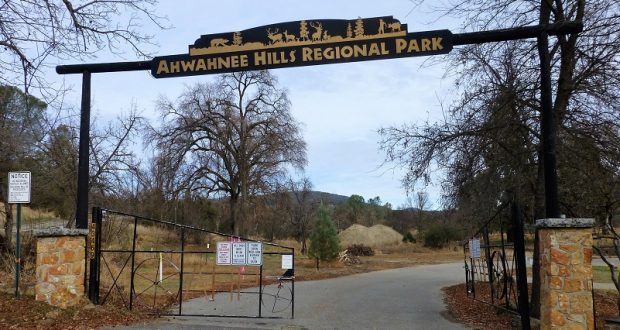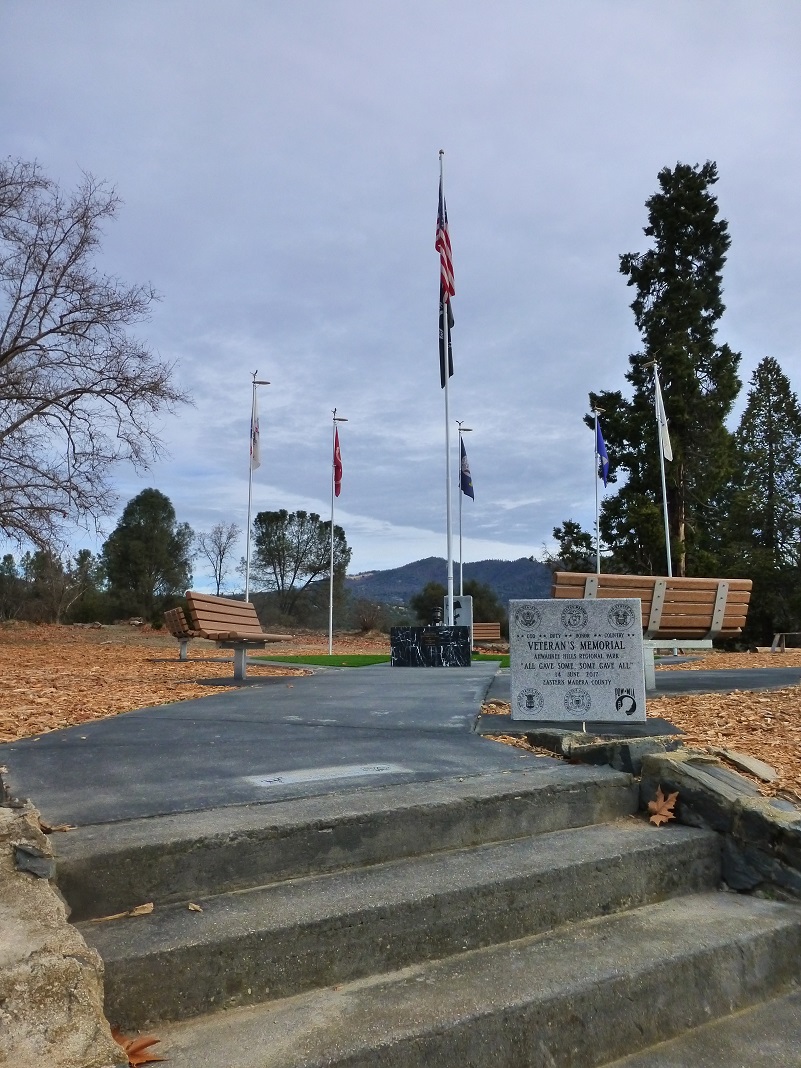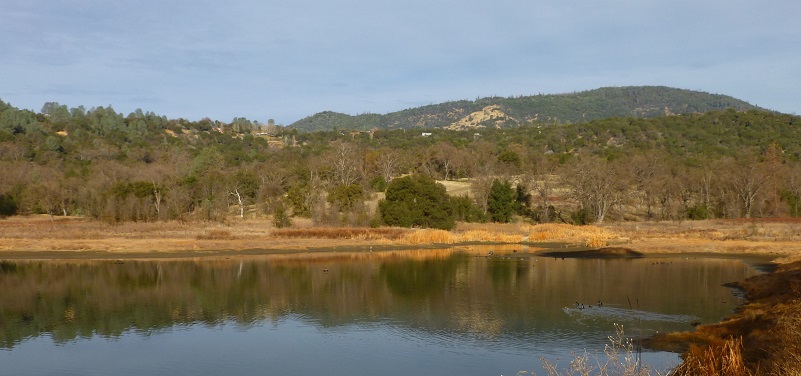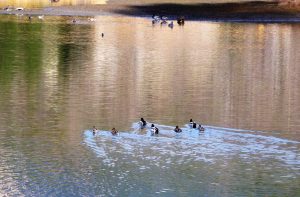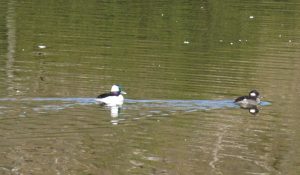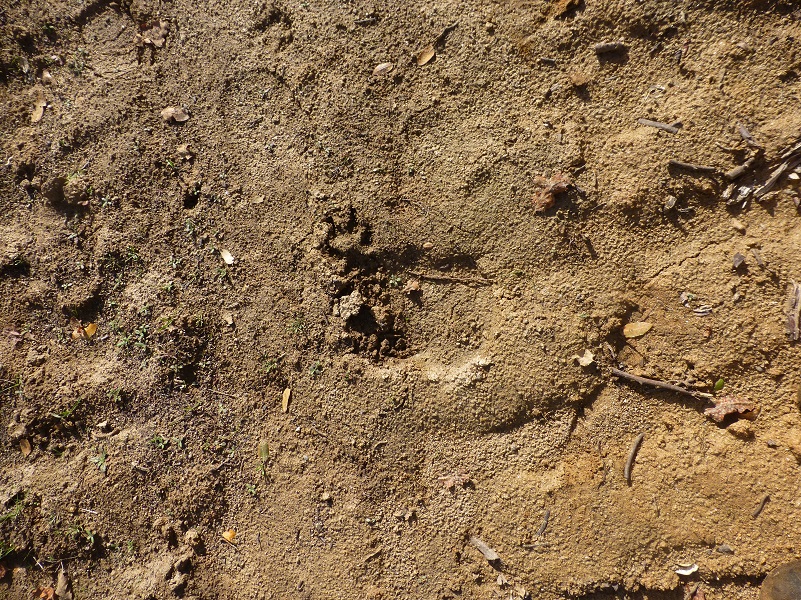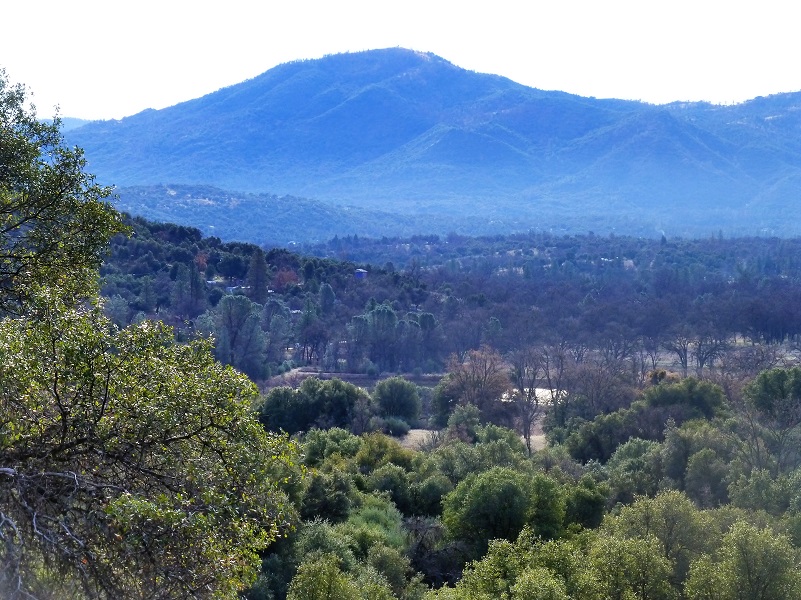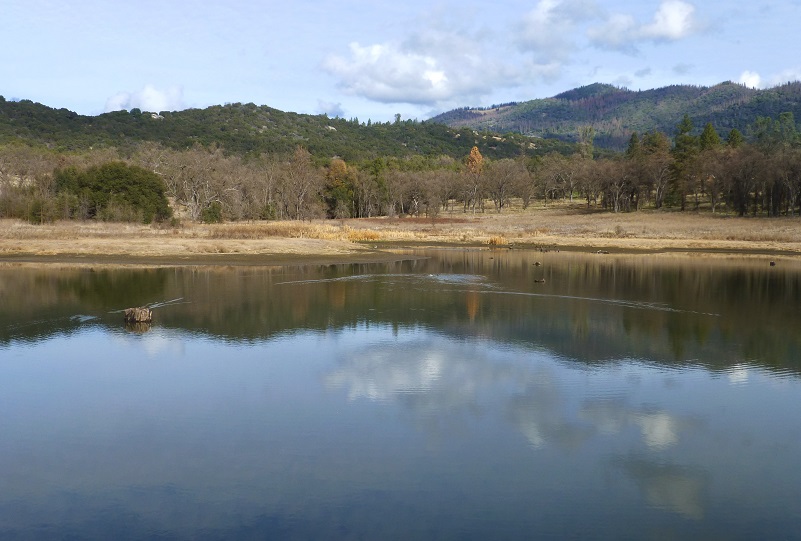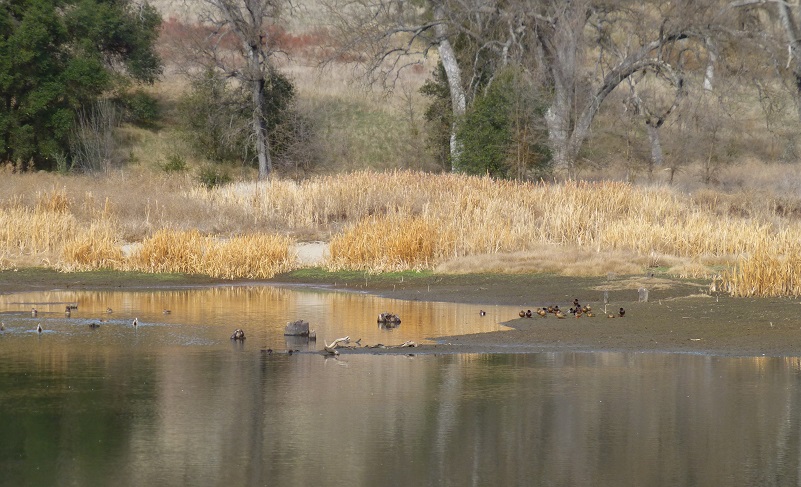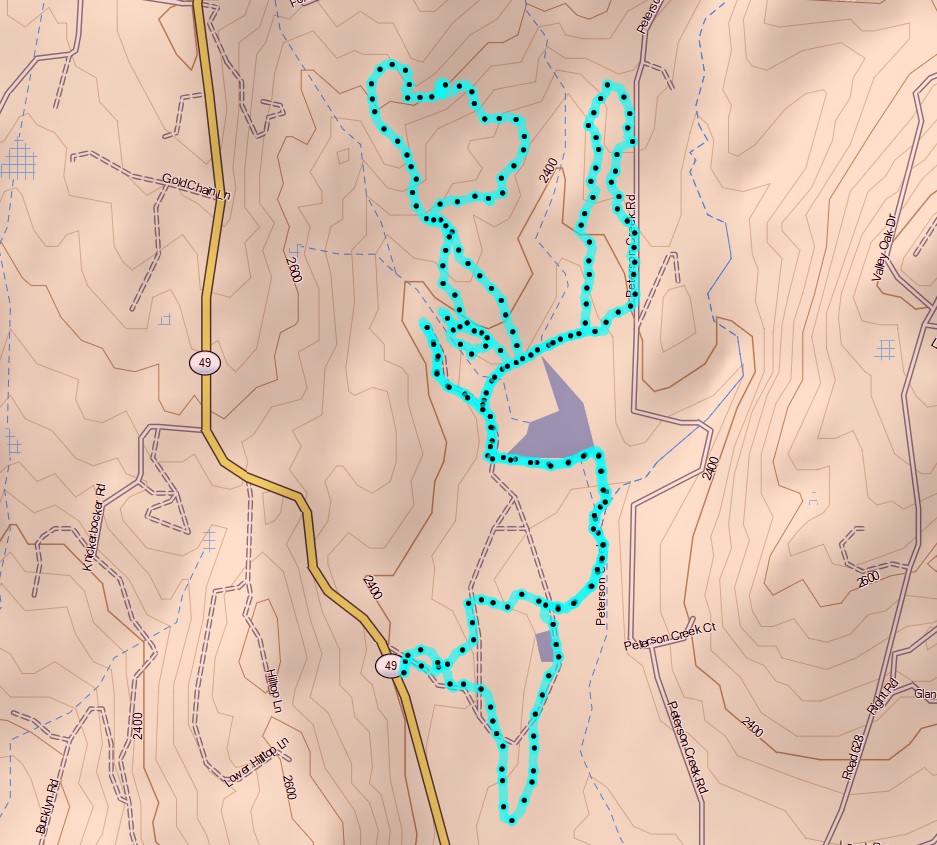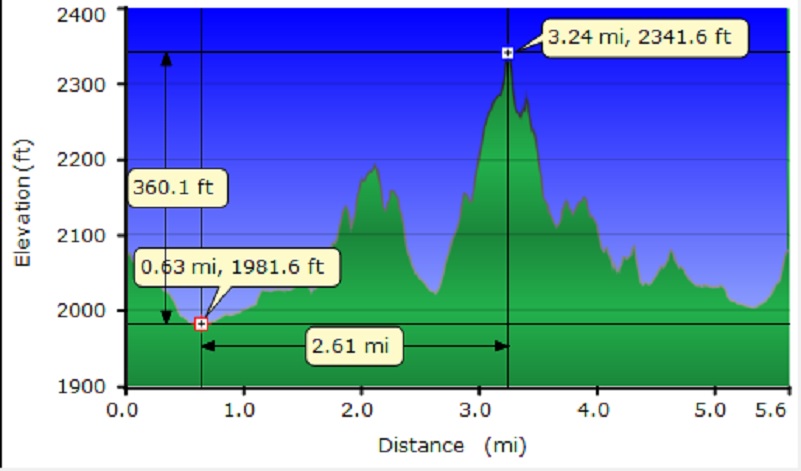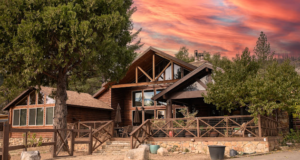If you don’t have time for a trip up to Yosemite or the USFS lands near us and still want to get out and enjoy nature, you sure don’t have to go far to get your fix in our own backyard at Ahwahnee Hills Regional Park off of Hwy 49 adjacent to Wasuma Elementary School in Ahwahnee. Although I walked a little over five-and-a-half miles, you can do more or less and over flatter or hillier ground, your choice!
Where: Ahwahnee Hills Regional Park
Distance: 5.62 Miles (more or less, depending on how far you wish to go)
Difficulty: Easy to Moderate
Elevation Range: 2,302’– 2,672′
Date: January 5, 2018
Map: Ahwahnee Topographic Quad
Dog Hike? Yes
The Ahwahnee Hills Regional Park offers up 5 miles of walking or hiking trails, 2 miles of equestrian trails, picnic areas, restrooms, interpretive and study centers on 241 acres. Dogs are welcome, on leash, but I left Sally home for this adventure.
Entrance to the park is free for individuals, but a fee is required to reserve space or conduct events. Their website says that when staffing levels permit, the park will be open daily from 8:00 a.m. until dusk Wednesday through Sunday, with pedestrian access Mondays and Tuesdays via the Wasuma gate. A park host will be in residence or volunteer docents will be on duty at most times when the park is open to the public. I suggest that you check their website Ahwahnee Hills Regional Park for more specific and up to date information. Directions to the park, along with maps of the trails are located on the website.
The park land is owned by Madera County, but the day-to-day operation, maintenance, and improvements are the responsibility of the Friends of Ahwahnee Hills Regional Park, a non-profit organization formed for this purpose. They have done an amazing job on the trails and park. The Friends is an all-volunteer group and they count on your donation of time or money to help this park going.
Their website also is full of information on the history of the land that the park is on, along with some wonderful historical pictures. They shared that the name Ahwahnee is an Indian word meaning “deep grassy valley.”As I wandered along the trails, I couldn’t help but imagine what it must have been like back when the Native Americans lived in this area. Lots of acorns and rocks to grind them were undoubtedly on of the tasks that were done in this area.
Many of us have heard the stories of back in 1851 when a force of 74 Anglo miners under the command of Captain James Burney, Sheriff of Mariposa County, fought a battle with the Miwok Indians on or near the park? Lt. Skeane died from his wound received in the battle and was buried in what is now the park. In 1970 his body was moved to Oakhill Cemetery in Oakhurst. To learn more about how Skeane met his death and how Dick Tillinson lost half of his nose, here is a link to a 1928 description of what led up to this battle and the aftermath in The Last of the California Rangers (1928) by Jill L. Cossley-Batt
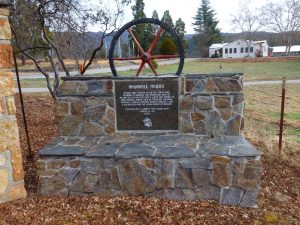 As you enter through the main gate, on the right hand side is a monument recognizing the Ahwahnee Tavern that was placed in 1999 by The Grub Gulch Chapter of The Ancient and Honorable Order of E. Vitus Clampus. It says “Historic Way-Station on the old stage road, Raymond to Wawona. The Tavern was built by William Sell in the late 1880’s. Lunch was served to many notable such as President Theodore Roosevelt, Susan B. Anthony, Andrew Carnegie, John D. Rockefeller and the Crown Prince of Belgium.” The visit by President Theodore Roosevelt was in 1903 on his way to meet John Muir and visit Yosemite Valley.
As you enter through the main gate, on the right hand side is a monument recognizing the Ahwahnee Tavern that was placed in 1999 by The Grub Gulch Chapter of The Ancient and Honorable Order of E. Vitus Clampus. It says “Historic Way-Station on the old stage road, Raymond to Wawona. The Tavern was built by William Sell in the late 1880’s. Lunch was served to many notable such as President Theodore Roosevelt, Susan B. Anthony, Andrew Carnegie, John D. Rockefeller and the Crown Prince of Belgium.” The visit by President Theodore Roosevelt was in 1903 on his way to meet John Muir and visit Yosemite Valley.
Ahwahnee Hill Regional Park’s website has some amazing historic pictures of the park. These photographs are of the Ahwahnee Tavern.
![The Ahwahnee Tavern, ca. 1900-1903 Photo courtesy Zelda Garey Dubel [Public domain]](https://sierranewsonline.com/wp-content/uploads/2018/01/ahwahnee-tavern-1-750w.jpg)
The Ahwahnee Tavern, ca. 1900-1903 Photo Courtesy Zelda Garey Dubel [Public domain] and Ahwahnee Hills Regional Park
Here is some history related to ownership of this property from Ahwahnee Hills Regional Park’s Website.
- The first owner of the property was Franklin Dennis, who homesteaded 160 acres on the future park site in 1882. The property then passed to Martin H. and Bessie Cassell, who by 1891 owned 320 acres.
- Sometime about April 1892, the property was purchased by Albert Henry Washburn (1836–1902), owner of the stage company that operated between Raymond and Wawona.
- In August 1892, Washburn sold the property to William Martin Sell, Sr. (1854-1932). Sell soon built the two-story Ahwahnee Tavern to serve as a stage and luncheon stop on the Raymond to Wawona Road. Sell had earlier been the first person to send a telegraph signal out of Yosemite Valley. Washburn built stables and other buildings and operated the Ahwahnee Tavern in partnership with Sell.
- In 1906 William Sell moved to El Portal to build the El Portal Hotel. In his absence, Edwin T. Huffman leased and ran the tavern. Horse-drawn stages were gradually replaced by automobile stages.
- In 1913 Huffman moved his operations to the Miami Lodge, which he had built in a location better situated for automobile traffic.
- In 1918 the Sells sold the Ahwahnee Tavern and ranch to Madera, Merced, and Stanislaus Counties to create the Tri-County Tuberculosis Sanatorium. The counties also purchased an adjacent parcel to increase the size to 480 acres. The sanatorium built dozens of structures over the years, including a hospital complex, quarters for doctors and nurses, a children’s home, and a school. Julia Morgan, noted architect of Hearst Castle, designed some of the buildings. The original tavern building served as a kitchen and dining area until it burned down in 1937. The sanatorium started with 16 patients and eventually grew to care for more than 100. Besides taking care of patients, sanatorium staff kept farm animals and grew fruit and vegetables on the property. The patient load declined as new techniques and medicines were found to treat tuberculosis.
- The sanatorium closed in 1969.
Some more amazing historical pictures of the Ahwahnee Sanitorium for Ahwahnee Hills Regional Parks collection. I located a Madera Tribune newspaper article that was written in 1954 by Mrs. William Sells about the Ahwahnee Sanitorium, giving a glimpse into the cutting edge equipment that they had, along with a glimpse into the patient’s treatment life while they were there. I have a transcript of that article at the end of this blog or you can locate the article here.
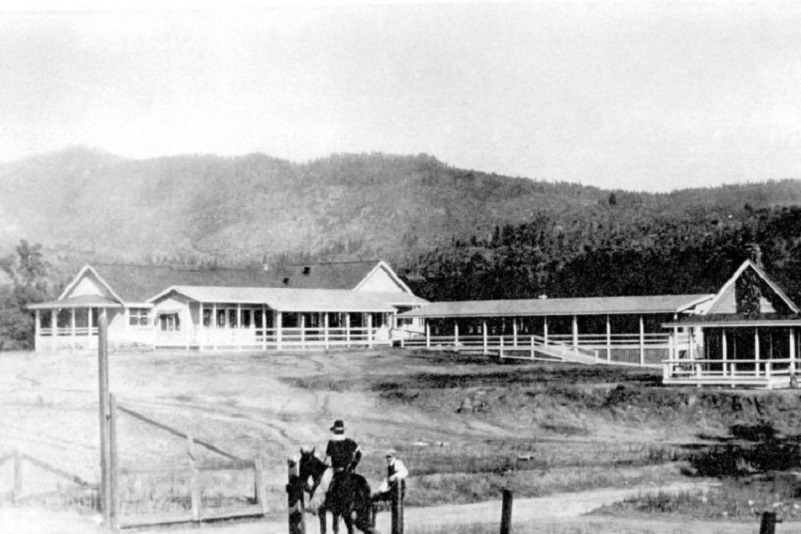
Tri-County Tuberculosis Sanatorium, 1924 Photo courtesy Fresno Flats Museum and Historical Park and Ahwahnee Hills Regional Park

Tri-County Tuberculosis Sanatorium, 1930 Photo courtesy Madera County Library and Ahwahnee Hills Regional Park

Tri-County Tuberculosis Sanatorium, 1929 Photo courtesy Madera County Historical Society and Ahwahnee Hills Regional Park
- In 1969, a private non-profit corporation established a school on the site, using many of the existing buildings, for boys with behavioral problems. The students learned to care for the school’s animals and perform other vocational tasks. The population of boys eventually reached 59, with about that many staff. The school closed in 1985. The property ended up in the hands of Madera County and a caretaker lived on the property until the early 1990’s, at which time local residents began to push for establishing a park on the site. That was the beginning of the Friends of Ahwahnee Hills Regional Park.
As I drove in, I admired the new Veteran’s Memorial. Very nice!
I hadn’t visited the park since it was used for the fires this summer. I could see where dozers had flattened out areas for parking and other functions related to support and command of the fires, but I could also see that a lot of rehabilitation work had also been done after they had finished.
We followed the trail up to the pond, which had water.
And with that water, brought waterfowl.
Wider trails and flagging related to new trails, especially in the northeastern part of the park, just called out for us to follow them to see where they led. Since the road or trail hadn’t had much use, it was really clear to pick out animal tracks such as this bear, with deer and coyote adjacent to it. This was a good sized bear track.
The trail climbed to areas where we were treated to nice views.
After we wandered around, we headed back down along the pond to find clouds reflecting in the water and those waterfowl taking a siesta in the sun.
There are many wild animals that either call Awhahnee Hills Regional Park their home or wander though it on occasion.You might get lucky and spot a beaver in the pond. Bobcats, squirrels, cottontail, coyote, mountain lion, mule deer and western grey squirrel have been seen in the park. Fence lizards, Western pond turtles and rattlesnakes also call the park their home. I think it is prudent to pay attention where you are walking and your surroundings. You just may catch a sighting or footprint but they just may be watching you. Oh, and there is poison oak around.
Transcript of Madera Tribune newspaper article (Number 136) from September 21, 1954:
AHWAHNEE SANITARIUM HOLDS HOPE FOR VICTIMS OF TB
By MRS. WILLIAM SELL
Nestled In the hills of hojthern Madera County is the Alnvahnee Sanitarium, a hospital dedicated to the treatment and rehabilitation of victims of tuberculosis.
Founded in 1919, when the three counties Madera. Merced and Stanislaus purchased the land from William Sell. Sr. the sanitarium has constantly cared for the ili of all three areas, until January, 1954, when Stanislaus withdrew from the tri-county organization. A hospital has been built in Modesto to care for Stanislaus tubercular patients.
Under the guidance of Dr. David N. Lindberg. who came to Ahwahnee in October 1953 following the resignation of Dr. William Wheaton, many improvements have been made.
Modern equipment has been Installed for the treatment of patients, and added means of rehabilitation have been placed at the disposal of patients anxious to return to work after leaving Ahwahnee.
The X-ray, used for many years, has been augmented by a stratograph or a body action radiography machine. This is used to pinpoint diseased areas that might not otherwise be located. It insures a true diagnosis of the disease.
The treatment of tuberculosis has advanced into the era of miracle drugs and surgery. If no cavity is found by the stratograph, the treatment for the patient involves rest and the use of drugs, however, rather than surgery. Rest, both physical and mental. is given a 30 percent rating in the curing of tuberculosis.
Rest, plus nutrition, medicine climate make up the program upon which a patient depends for restoration of his health.
Dr. Lindberg stresses the seven basic foods in the diet of his patients. And while climate itself accounts for only five percent of the cure, he believes Ahwahnee provides the best weather can give to tubercular sick; freedom from dust and wind, maximum amount of sunshine, daily variation of temperature, and four definite seasons of the year.
Another piece of equipment added to the hospital recently is an ‘’intermittent posture pressure respirator,” This alliterative device is an aid for proper breathing.
Taxpayers may be interested to know that this new equipment was purchased by savings made by Dr. Lindberg in the operation of the hospital under the 1933-54 budget. In addition to tills saving. $30,93.9.09 was returned to the counties as an unspent balance.
The average number of patients being treated at Ahwahnee is 80.
Many recent improvements have been made to the Sanitarium plant. All the buildings are freshly painted or in the process. The grounds have been laid out anew. Fences have been built and painted.
The patients’ bathrooms have been remodeled—tiled and repainted. This was done to comply with modern standards of sanitation.
The business office, information center of the institution, has been refurnished with all steel desks and chairs. One feels, upon entering, that he is in a most modernly equipped office. The hospital office and reception rooms furnish the initial suggestion of the character of the facilities for the treatment of incoming patients.
A frozen food walk in refrigerator has been installed to allow economy buying and to avoid waste.
There has been a rebirth of occupational therapy under the supervision of Mrs. Emily Johnson, teacher at the institution. Patients are taught occupations that will be useful to them when they : are able to leave, with beneficial i results to the patient’s mind and body.
A printing machine, recently purchased by the Madera County Tubercular Society from its Christmas Seal fund, has been presented to the hospital. A I paper, ‘Ahwahnee Apex,” is published monthly by a staff of patients, a media of information by and for the personnel of the institution. Type is set and the newspaper printed by students of the therapy classes.
The public address system used throughout the rooms and wards was also a gift of the MOTS. It is used anytime, but regularly each Monday by Dr. I.indberg when he talks to all his patients, advising (hem on the care and treatment of the disease as it affects the individual.
All the advantages of the newer treatments for tuberculosis are available at Ahwahnee.
Dr. and Mrs. Lindberg, and their sons, Richard and Donald, came to Ahwahnee from Utah I where Dr. Lindberg for 10 years was medical director of the Utah State Hospital for Tuberculosis. While there he was also the clinical professor of medicine and tuberculosis consultant at the University of Utah medical school.
A past vice-president of the National TB Association, Lindberg has studied throughout Europe. He has written 22 treatises on chest study and treatmcnt, and a book on the advancement in the care and treatment of the tubercular patient.
Dog Hike? Yes
Dogs must be kept leashed at all times, per Madera County ordinance. Violators will be ticketed.
All dogs in Madera County are expected to be under control at all times. They must be confined to your property. If you take them off your property, to go for a walk for example, they must be on a leash. Any dog found running at large can be impounded at the County Shelter or returned to its owner with a citation.
Dogs picked up in violation of the leash law may be redeemed at the shelter at 14269 Road 28 in Madera. Dogs brought in without identification are held for three (3) working days. Dogs with ID or known owners are held for ten (10) working days. Dogs unclaimed at the end of the holding period are available for adoption to responsible homes or can be euthanized after this time.
Link to Madera County Dog Ordinance Section 6.04.520 and Forward
Map and Profile:
Ahwahnee Hills Regional Park Hike Doarama
Sources:
Ahwahnee Tavern E. Clampus Vitus
The Last of the California Rangers (1928) by Jill L. Cossley-Batt
Madera Tribune, Number 136, September 21, 1954
Madera County Dog Zone Sections 6.04.520 and Forward
Prior Blogs in the Area:
Ahwahnee Hills Regional Park Hike September 9, 2014

